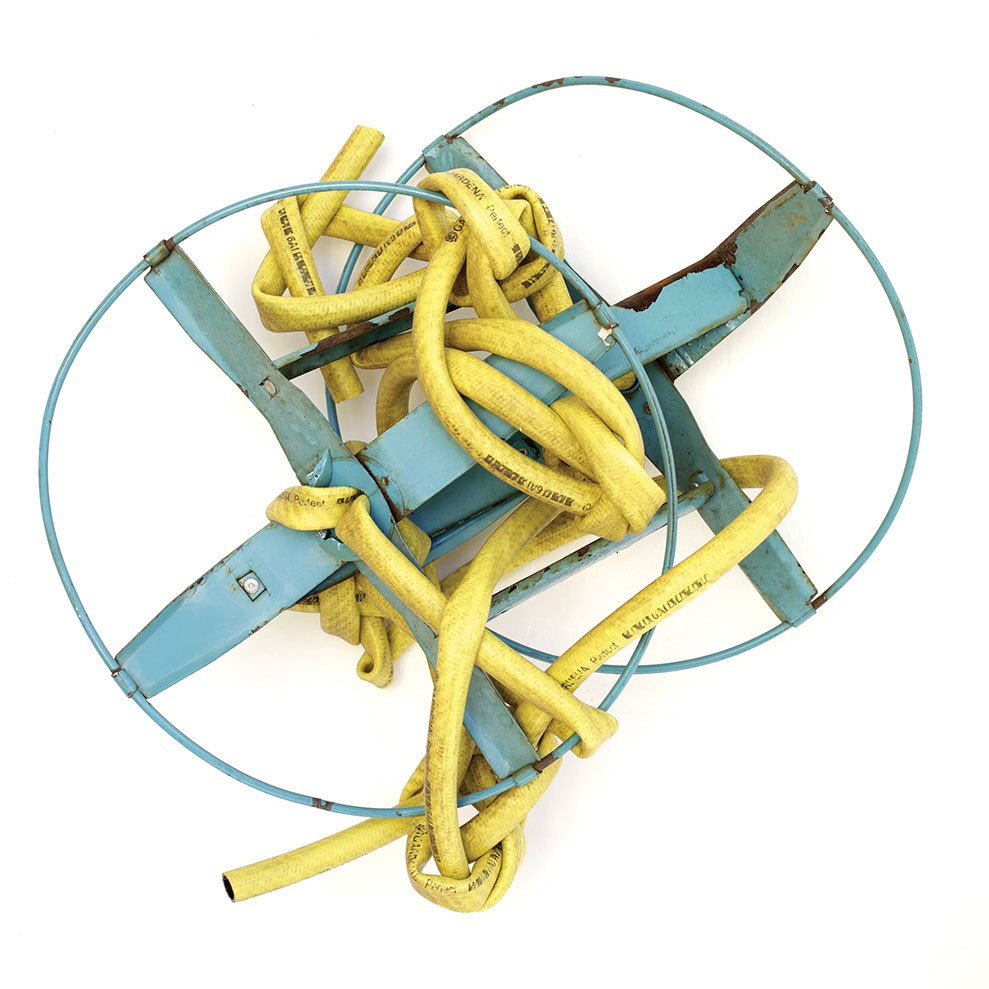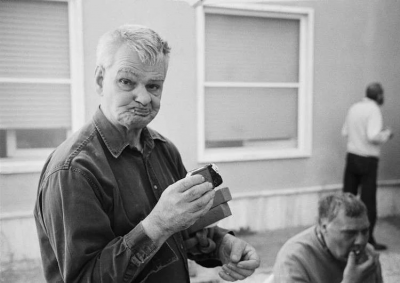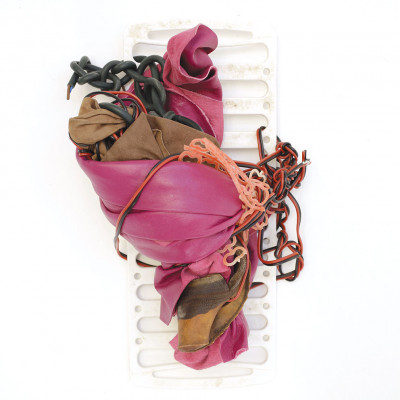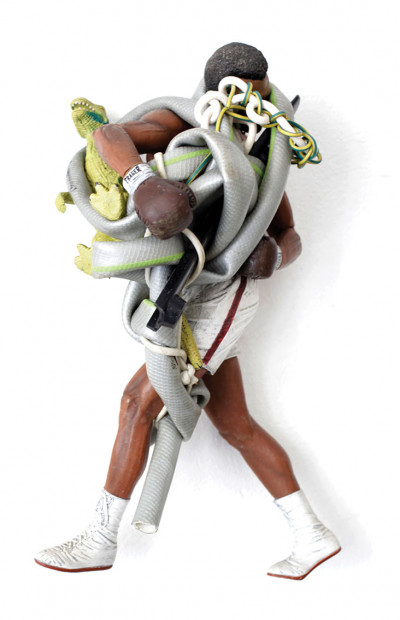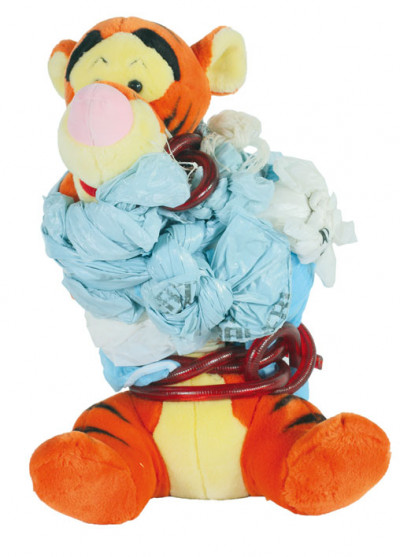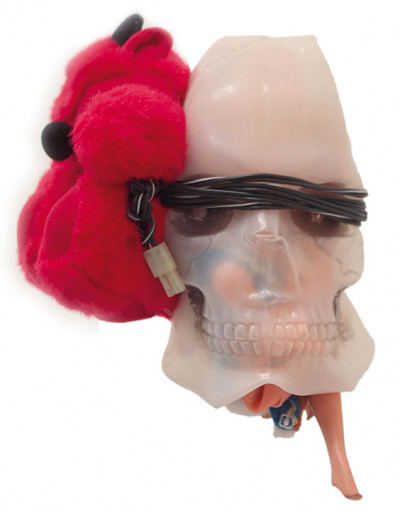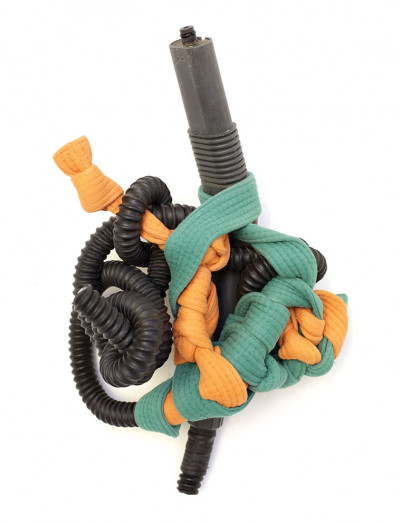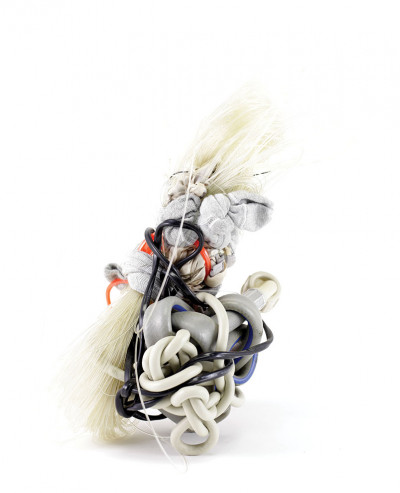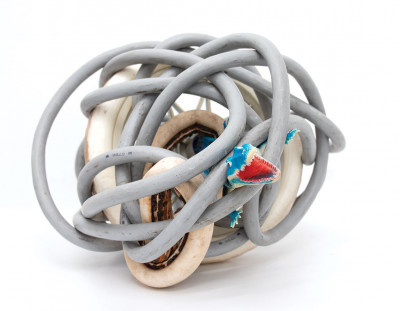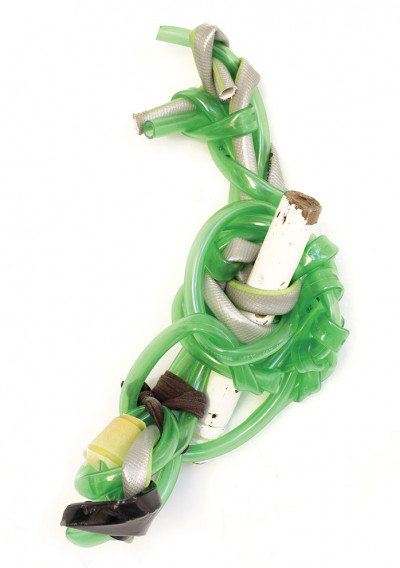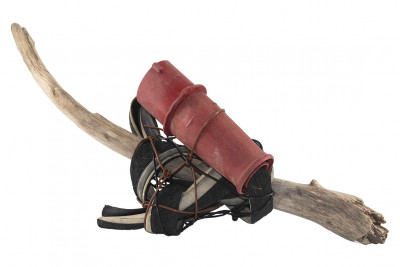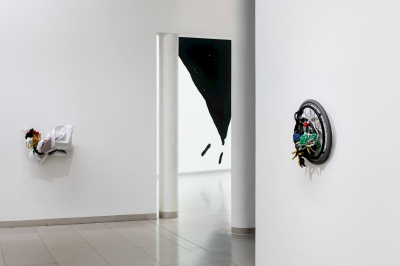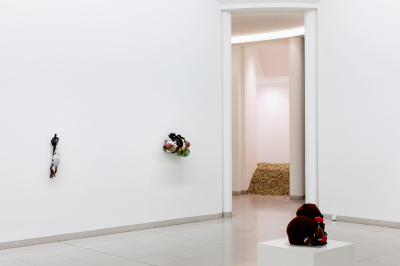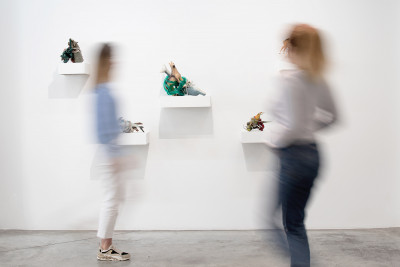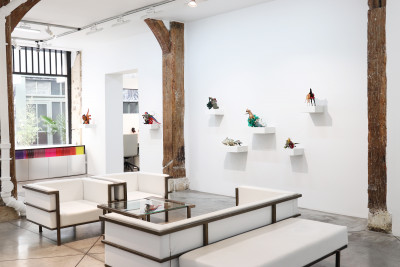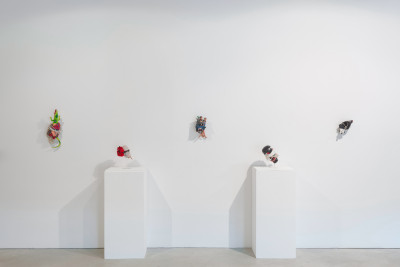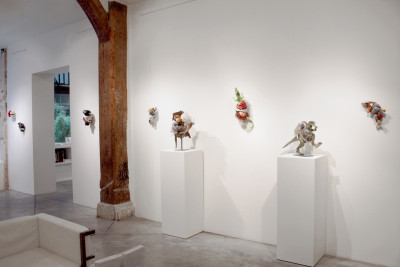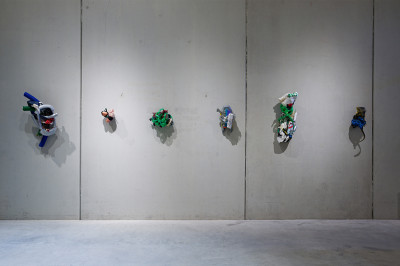Franco Bellucci
Bellucci attended the Blu Cammello workshop in Livorno, where he was brought to light by the artist Riccardo Bargellini. His hybrid sculptures, born from the assemblage of eclectic objects, form a mysterious language where destinies intertwine and echo one another, seen through the lens of transition, fetishism, or the apotropaic.
His works, part of the collections of the Musée National d’Art Moderne (Pompidou) and the Museum für Moderne Kunst in Frankfurt, have been showcased in numerous major exhibitions, notably at the Palais de Tokyo in Paris.
“These works are endowed with a symbolic power that many ‘professional’ artists are incapable of achieving. “(P. Dagen, Le Monde)
Youngest of three siblings, Franco Bellucci was born in Livorno, Italy, in 1945. An encephalitis contracted during childhood hindered his psychological development and left him unable to speak. During adolescence, he exhibited compulsive destructiveness toward surrounding objects, though his aggression was never directed at others or himself.
On February 15, 1961, the day of a total solar eclipse darkening northern Italy, he experienced a violent outburst, throwing a television out of a window. After hospitalization in Livorno, where he destroyed much of the hospital furniture, he was committed to the psychiatric hospital of Volterra. There, he spent most of his days strapped to his bed. Known for his exceptional physical strength, he was feared for his ability to shatter glass, tear out radiators and faucets, acts that often resulted in severe hand injuries.
In 1978, Italy’s Law 180 mandated the gradual closure of psychiatric hospitals. Franco was taken back into his family’s care. Upon his return, his first act was to open the drawer in his bedroom where he had kept his childhood toys, which he found untouched after all those years.
However, diagnosed as an “irrecoverable asylum residue,” he was soon returned to Volterra, where he remained confined—though no longer physically restrained—until 1998. The following year, he was entrusted to Dr. Ivanna Bianco and her team at the Franco Basaglia Center, an open-door residential facility in Livorno. It was there that Riccardo Bargellini founded the Blu Cammello workshop.
In this environment, where individual dignity was central, Franco moved freely. Intrigued by this once-feared man, Bargellini noticed that Franco constantly manipulated various objects, tying them together: underwear knotted to plastic containers, fragments of garden hoses, socks stolen from his roommates, and so on. Each weekend, after visiting his brother, Franco returned with “gift objects”—often extension cords or stuffed animals—which he would transform into materials for new creations, replacing previous assemblages.
Over time, Bargellini forged a connection with Franco by gathering the scattered objects he had flung around the center, sometimes even onto the rooftops, and discreetly providing him with new materials. This playful exchange became the foundation of a profound and meaningful relationship.
In recent years, the mutual trust between the two men has allowed Franco to break free from the coercive ties of institutionalization, replacing them with a rich and compassionate web of relationships. Together, they have created an environment where Franco could flourish both personally and artistically, earning him the nickname “the master binder.”
Franco Bellucci’s work has been featured in several major exhibitions: Banditi dell’Arte at Halle Saint Pierre (2013); a solo exhibition at MADmusée in Liège (2014-2015); and a dedicated space at La Maison Rouge during Art Brut, Collection abcd/Bruno Decharme. More recently, his pieces were presented during CRIP TIME at the Museum für Moderne Kunst in Frankfurt (MMK).
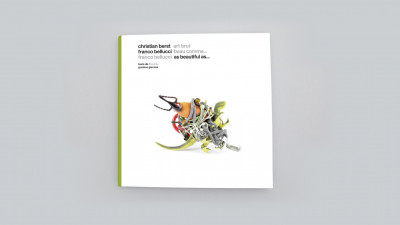
Preface : Gustavo Giacosa
Foreword : Christian Berst
Catalog published to mark the exhibition Franco Bellucci : beau comme…, from october 17th to november 28th, 2015.
